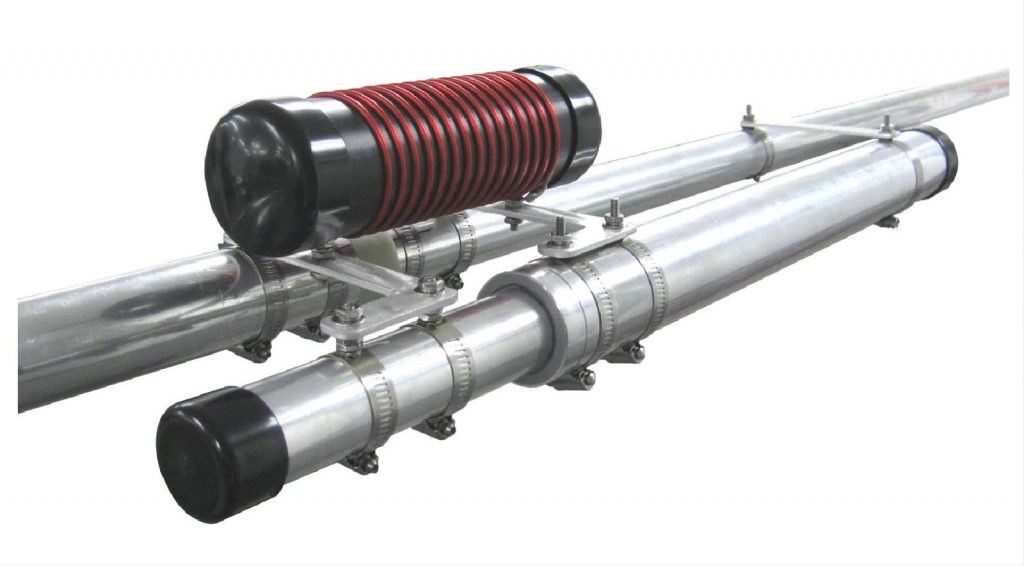In our first post on DX Engineering HF vertical antennas, we looked at the THUNDERBOLT® 40/30M model. Today, we’ll be checking out the THUNDERBOLT® Dual-Band High Performance 80/40M Vertical Antenna—a solidly-built model that stands up to severe weather; makes a good choice when you don’t have room for separate monoband verticals; reduces domestic QRM signals due to its low take-off angle; delivers proven pileup-busting DXing; provides convenient raising and lowering for simplified adjustments; is easy to tune; and comes with a detailed, step-by-step installation manual to boot.

Why is low take-off angle important?
Also known as the “angle of radiation,” take-off angle is an important factor affecting antenna performance. A signal sent at a low take-off angle from your vertical antenna will travel farther along the ground before hitting the ionosphere and bouncing back to Earth, where it will be sent skyward again—and so on and so on. Compared to high take-off angle signals which will reach the ionosphere sooner, low take-off angle signals will arrive at a DX station at greater strength because there will be fewer signal-dissipating “hops” needed to get there. On the other hand, a high angle of radiation works better for sending more powerful signals to nearby stations.
Here’s the nitty gritty on the THUNDERBOLT® 80/40M (DXE-8040VA-1):
- Full band coverage on 40 and 300 kHz on 80 meters with SWR under 2:1—no outboard tuner needed; 5 kW SSB and CW rated
- Operation on CW and Phone DX frequencies are within range of most radio internal tuners, so no antenna changes are necessary to switch frequencies
- An optional CW optimizer capacity hat kit (DXE-7580-THK) allows for adjustment down to a 3,400 kHz center frequency for dedicated CW operators and military/MARS operations
- Maximum legal power handling
- Optimum 53 foot overall height
- Includes patented DX Engineering Heavy-Duty Pivot Base for convenient raising and lowering
- Massive high-efficiency trap assembly gives the strongest signal possible on both bands
- Made with 3 inch OD aircraft-grade heavy wall tubing; self-supporting design withstands 50 MPH wind
DX Engineering recommends the installation of a radial system. For detailed installation instructions, other items you will need (steel mounting pipe, tubing, and concrete), and suggested parts, read the detailed instruction manual here.
Enter “Vertical” at OnAllBands for more insights on deciding if an HF vertical antenna is right for your Amateur Radio station.
What do Hams think?
Five Stars: The antenna has been up more than a couple of years and weathered some very severe windstorms and came out just fine. Installed 32 65-foot radials and all the work was worth it. Even with today’s band conditions I work the majority of DX I shoot for. The vertical allows me to work diversity against my tri-bander and, more often than not, get good signal improvements. All in all a great antenna for a two-band vertical.
Five Stars: If I could only have one antenna, the 8040VA would be it. I have had it installed for about 9 months and use it as my primary antenna. I use it on 80M, 40M, 30M, 20M, and 15M. The internal tuners in both my Yaesu rigs tune it to any frequency in the band, but a tuner isn’t necessary. Tilt-over base makes adjustment easy. I mostly use CW and FT8 chasing DX, but have been able to work DX in the phone parts of the band with ease. I put down 32 radials and the DX Engineering radial plate. WSPR tests at 5 watts regularly reach VK and ZL as well as Europe and Antarctica. Well-built and clear assembly instructions. You can’t go wrong with a DX Engineering product.
Five Stars: I’ve had this antenna for several months now. First, this is a big project for sure. I’ll say right up front, the manual is the best I’ve read and clearest I’ve seen in 43 years as a Ham. The manual was excellent. Further, DXE bags and labels ALL hardware. I’m accustomed to a huge bag of nuts, bolts, and myriad washers. Having them bagged separately and properly labeled made assembly fun. What a gigantic time-saver as well.
Five Stars: Have had several verticals in the past and have thought of them as second-rate performers. Performance of the DX Engineering 8040VA has been excellent and dispels the myth. Low VSWR on 40 throughout the band. Right now tuned for 3.8 with a 1.1:1 VSWR and 2.4 in the CW band which can be used with a tuner. We have moved once and the antenna came apart and reinstalled effortlessly. Crank down winch is a great investment, especially with hurricanes in Florida—survived Matthew and Irma.

